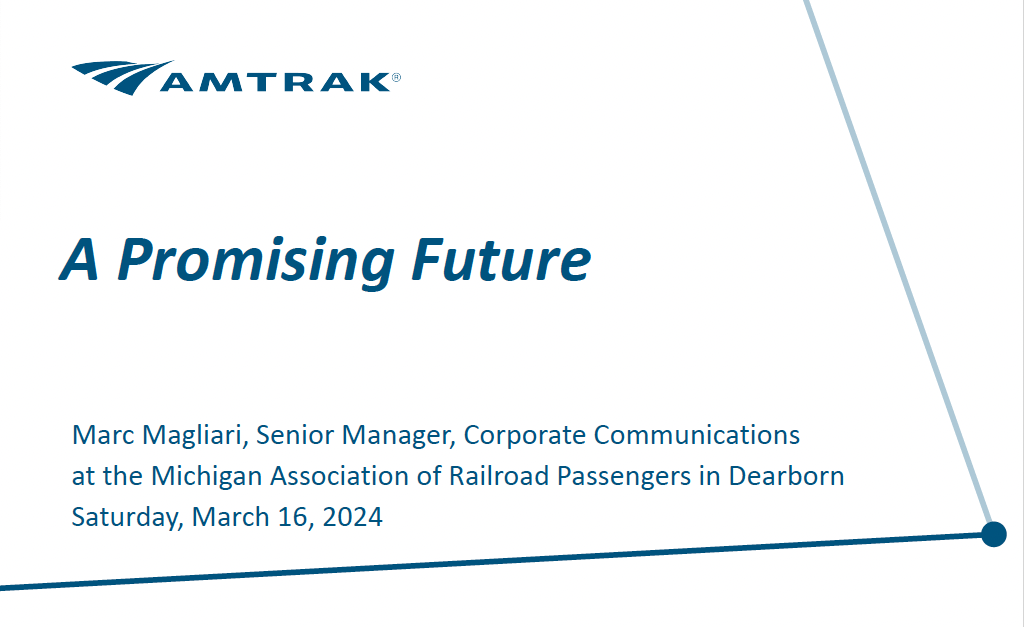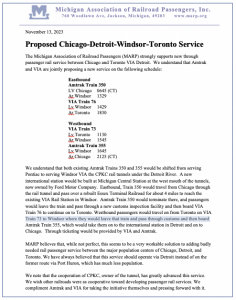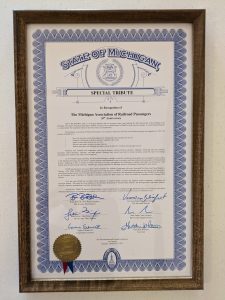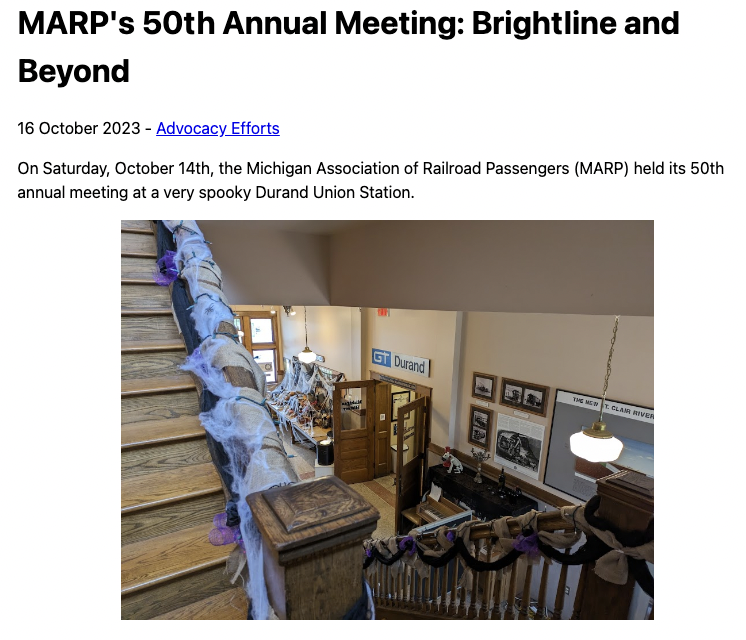Select the image for presentation slides
Category Archives: News
TEXRail Success, Celebrates Huge Milestone
Trinity Metro Reflects on TEXRail Success, Celebrates Huge Milestone
Read the Metro Magazine article.
MARP Position on Service to Toronto
State of Michigan Presents Tribute to MARP
A highlight of MARP’s 50th Annual Meeting held at Durand Union Station on October 14, 2023 was a formal Tribute presentation honoring MARP for 50 years of advocacy for passenger train service in our state. The Tribute, pictured below, was presented to John DeLora and John Guidinger, founding chair, and current chair, respectively, of MARP by Em Lefko, Chief of Staff for State Senator Veronica Klinefelt.
Sen Klinefelt was successful in including $20 million in the FY2024 budget to help further the development of enhanced speed train service across Michigan. Thanks go to Steve Vagnozzi, MARP Governmental Affairs Coordinator, for seeking this legislative tribute. In his meetings with legislators this year he has found good support for passenger rail.
Blog Post: MARP’s 50th Annual Meeting: Brightline and Beyond
Corey Rowe, a Board member of Transit Riders United, wrote a wonderful blog post on the annual meeting. It can be found here: https://coreyrowe.me/2023/10/





